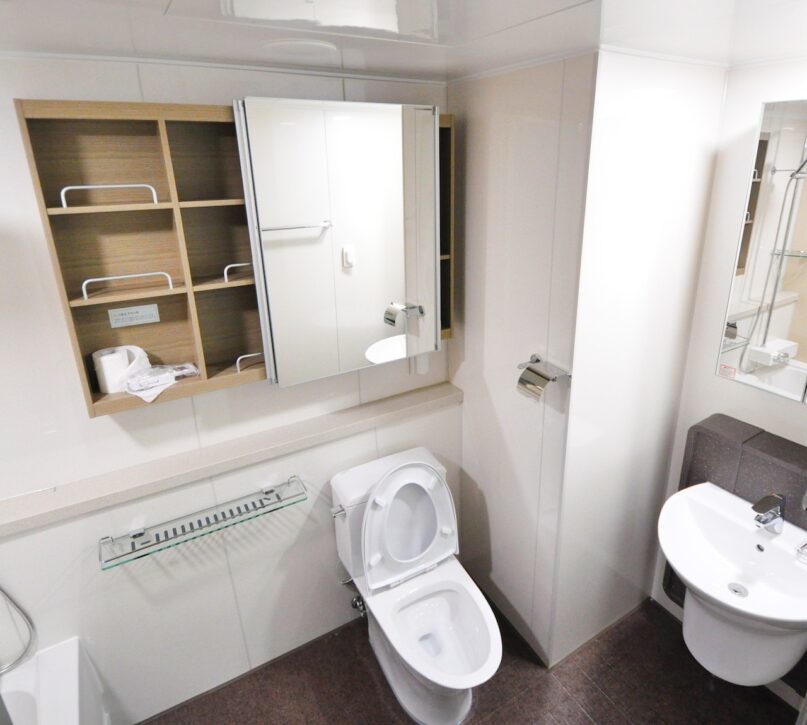If you’ve ever experienced a running toilet, you know how annoying it can be. Not only is it a waste of water, but it can also be a sign of a more serious problem. Luckily, there are a number of ways to quickly stop a running toilet and fix common flush problems.
In this article, we will explore 17 ways to stop a running toilet and fix common flush problems. We will also provide a step-by-step guide on how to fix a running toilet. By the end of this article, you will have all the tools you need to fix your toilet problems and save water in the process!
1. Don’t Panic!:
The first thing you should do when you notice a running toilet is not to panic. This is a common problem and can usually be solved with a few simple steps. Start by isolating the problem and assessing the situation by following the steps below.
2. Isolate the Problem:
Before starting any repairs, you should isolate the problem. Check the flapper or ball, handle, tank and bowl. You should also check the fill valve, which is located inside the tank. If the handle is correctly turned, the flapper is not stuck, and the fill valve is functioning correctly, the issue could lie with the tank or bowl.
3. Check the Flapper or Ball:
The flapper or ball is located near the bottom of the tank and should be securely attached to the tank. Make sure that it is properly in place and not stuck open or closed. If the flapper or ball is not correctly aligned, the water in the tank may not properly move into the bowl.
4. Check the Fill Valve:
The fill valve is located inside the tank and is responsible for regulating the water flow into the tank. Make sure the fill valve is securely and tightly in place, and that it is properly adjusted. If it is too high, water may be running out of the tank and into the bowl.
5. Check the Handle:
The handle is the lever that is used to flush the toilet. Make sure the handle is securely attached and moving properly when it is turned. You may need to check the cables, as they can become worn or stuck over time.
6. Check the Tank:
Once you have checked the flapper or ball, handle, and fill valve, the next step is to check the tank. Inspect the inside of the tank for any visible signs of damage or wear. Look for cracks, rust stains, or any other damage that could be preventing the toilet from flushing properly.
7. Check the Bowl:
Lastly, inspect the bowl for any signs of accumulation or overflowing. If the bowl is overflowing, then the problem is with the level of water in the tank rather than the flapper or ball. Check to make sure the bowl is not blocked by any obstructions, such as a toy or foreign object.
8. Check the Plunger:
If the above steps have not worked, then it’s time to check the plunger. The plunger helps to empty the toilet bowl of excess water and can become clogged over time. Gently remove the plunger and check for any blockages or obstructions.
9. Try a Store-Bought Toilet Cleaner:
If the plunger has not solved the problem, then it’s time to try a store-bought toilet cleaner. These cleaners are specially designed to clear clogs in pipes and toilets. They work by breaking up any stubborn deposits that are blocking the pipes and flushes.
10. Use Boiling Water:
If store-bought cleaners have not worked, then you can try using boiling water to help clear the pipe. Pour a bucket of boiling water into the toilet bowl and wait for 30 minutes to an hour, allowing the heat from the water to break down the blockage.
11. Try a Wire Coat Hanger:
If the problem is not solved with boiling water, you may need to try a wire coat hanger. Gently insert the wire into the pipe and gently dislodge any blockages or deposits that may be stuck in the pipes.
12. Use a Wire Brush:
If a wire coat hanger has not worked, then you can use a wire brush to clear the pipes. This can help dislodge any stubborn blockages that a wire coat hanger may not be able to reach.
13. Try a Plumbers’ Snake:
If both the wire brush and wire coat hanger have not worked, then you may need to try a plumbers’ snake. This is a long flexible cable that can be inserted into the pipes to carefully and gently break down any stubborn blockages that may be stuck in the pipes.
14. Try a Shop Vac:
If all else fails, try using a shop vac to suck out any debris or blockage that may be stuck in the pipes. The shop vac is the most powerful tool in this situation and should be used with caution.
15. Try a Pumice Stone:
If the shop vac has not worked, then you may need to try a pumice stone. Pumice stones can help to break up and dislodge any deposits or blockages that may be stuck in the pipes. Gently insert the pumice stone into the bowl and rock it back and forth to try and free the blockage.
16. Try a Toilet Auger:
If the pumice stone has not worked, then you may need to try a toilet auger. A toilet auger is a special tool designed specifically to reach deep into pipe clogs and break them down. .
17. Try Unclogging Chemicals:
If all of the above methods have failed, then it’s time to try unclogging chemicals. Unclogging chemicals are specifically designed to break down stubborn clogs in pipes. Be sure to wear gloves when using these chemicals and follow the manufacturer’s instructions carefully.




